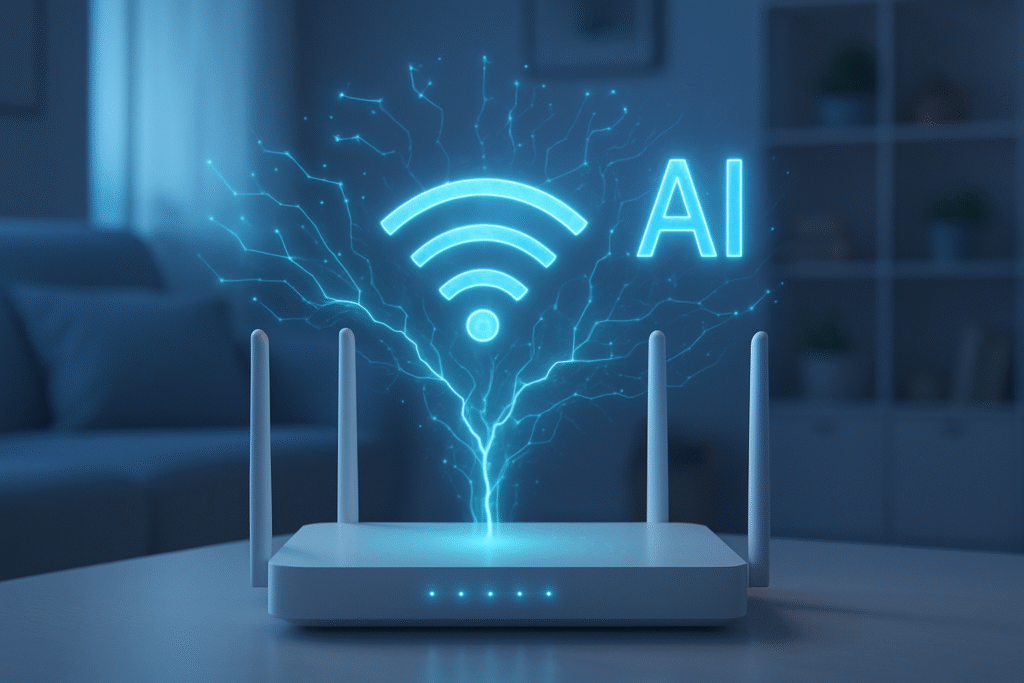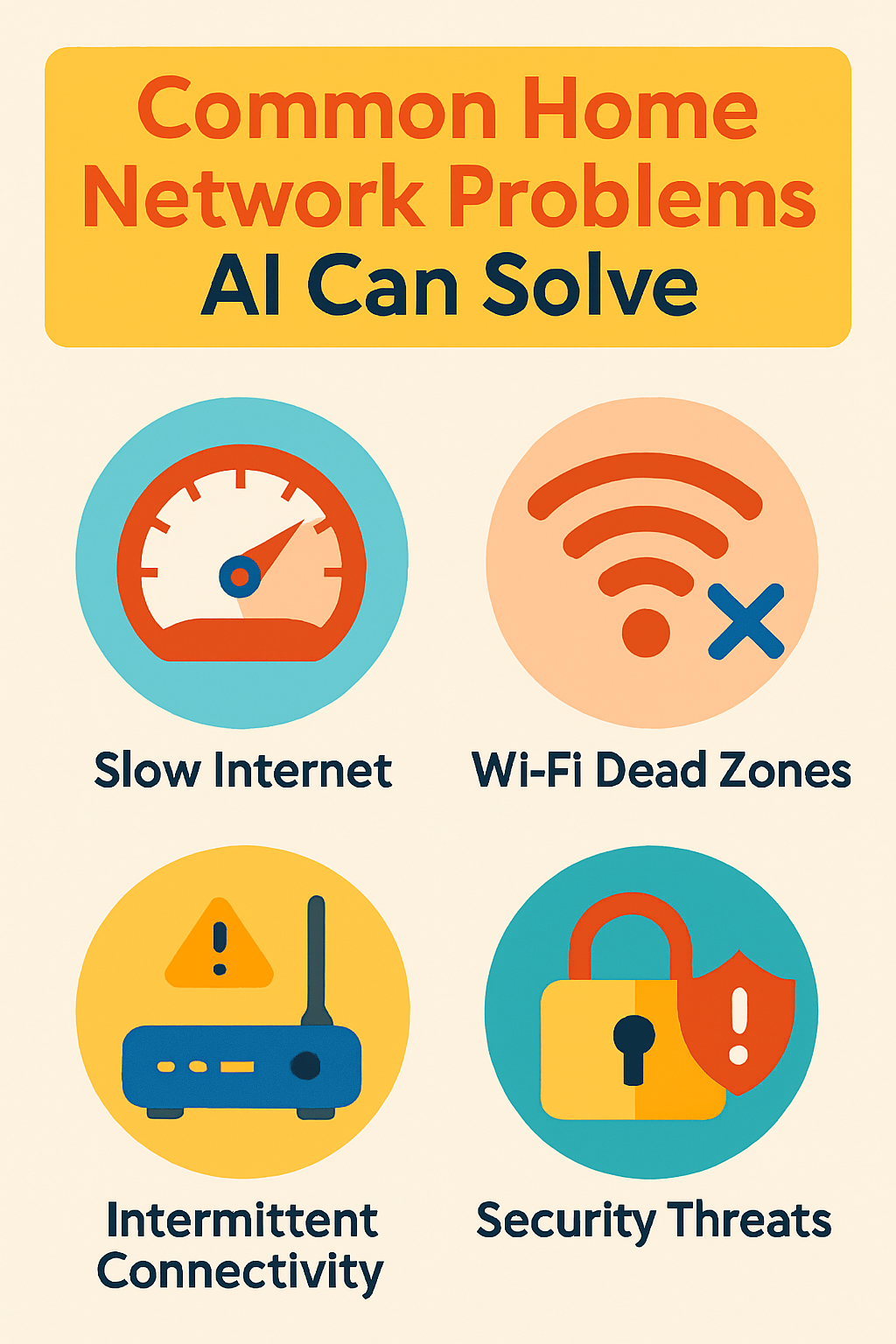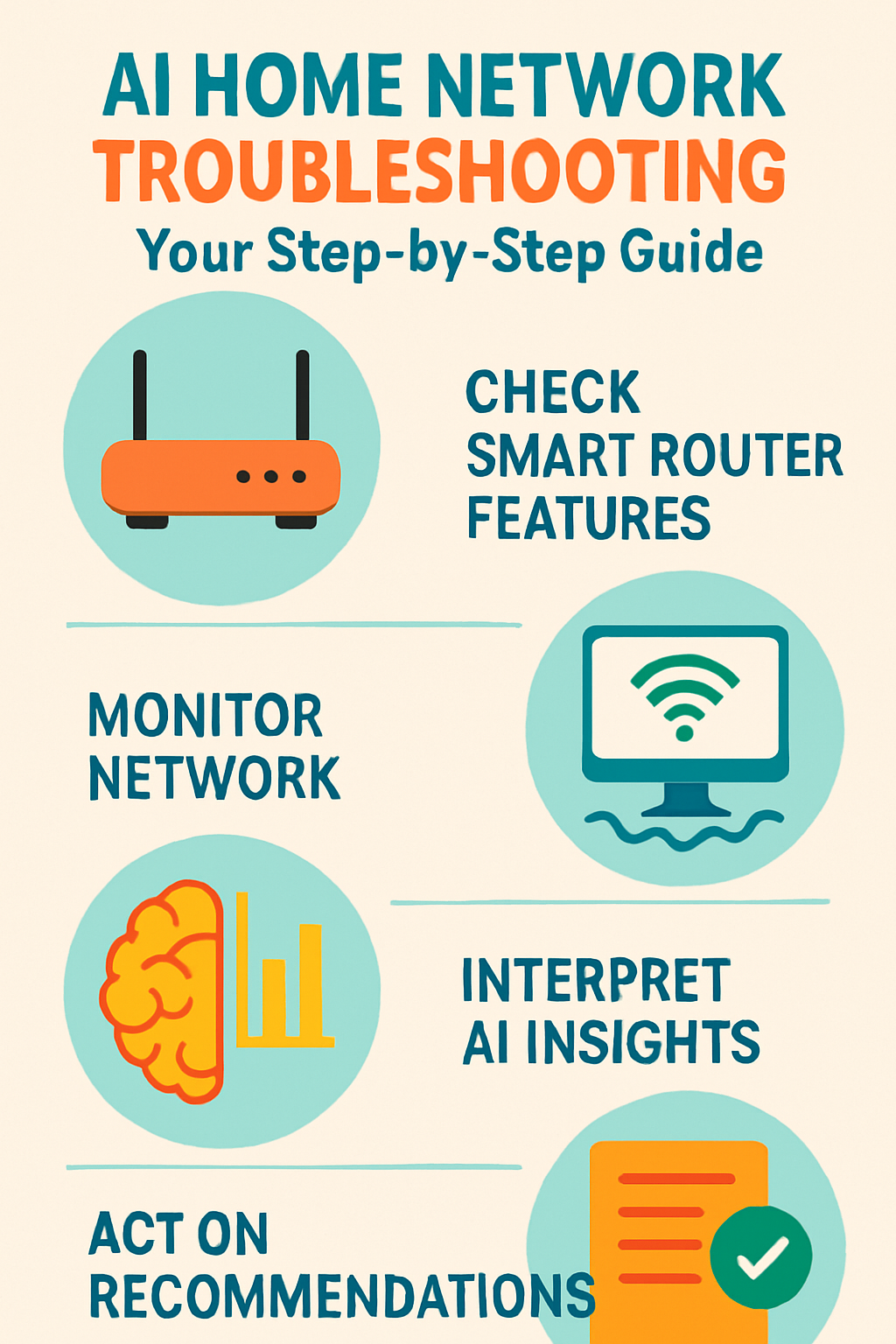
Hey there, fellow internet users! Have you ever found yourself pulling your hair out over a slow Wi-Fi connection or a mysteriously dropped video call?
I certainly have.
It feels like just when you need your internet the most, it decides to take a vacation.
For years, troubleshooting these issues meant a frustrating dance of unplugging, replugging, and endless reboots.
But what if I told you there’s a smarter way? A way that leverages the power of Artificial Intelligence to pinpoint and even predict your home network woes?
That’s right, AI isn’t just for self-driving cars or fancy chatbots anymore.
It’s rapidly making its way into our homes, especially in the realm of network management.
In this guide, we’re going to dive deep into how AI can revolutionize the way you diagnose and fix those pesky home network problems.
Get ready to transform your internet experience from frustrating to fantastic

Videos are added as random thoughts 💭 💭…
What Exactly is AI Network Diagnostics?
Think of AI network diagnostics as having a super-smart, always-on network engineer living inside your router.
Instead of just blindly routing traffic, an AI-powered system actively monitors, analyzes, and learns from your network’s behavior.
It uses sophisticated machine learning algorithms to detect patterns, identify anomalies, and even predict potential issues before they become full-blown problems.
This means less guesswork for you and more proactive solutions for your home internet.
Traditionally, troubleshooting involved you noticing a problem, then manually checking various components like your modem, router, cables, and device settings.
It was often a reactive process, and frankly, quite time-consuming.
With AI, the system is constantly collecting data on everything from signal strength and device connectivity to traffic patterns and potential interference.
This wealth of data allows the AI to make informed decisions and offer precise recommendations, transforming a reactive chore into a proactive advantage.
It’s about making your network smarter, more resilient, and ultimately, more reliable for everyone in your household.
How AI is Transforming Your Home Network
AI isn’t just a buzzword; it’s actively reshaping how our home networks function, often without us even realizing it.
The biggest game-changer comes in the form of smart routers.
These aren’t your average, run-of-the-mill devices.
Smart routers are equipped with advanced processors and software that integrate AI and machine learning capabilities directly into their core functions.
This allows them to do much more than just broadcast Wi-Fi.
For instance, many modern routers now feature adaptive traffic management.
This means the AI can intelligently prioritize bandwidth for different activities.
Streaming a 4K movie?
The AI might allocate more bandwidth to your smart TV.
In a crucial video conference? Your laptop gets priority.
This real-time optimization happens seamlessly in the background, ensuring that your most important online activities always have the resources they need, without you having to manually adjust settings.
Beyond optimization, AI also plays a crucial role in enhanced security.
By continuously monitoring network traffic, AI algorithms can detect unusual patterns that might indicate a security threat, such as malware activity, unauthorized access attempts, or phishing attacks.
Some routers, like those with ASUS AiProtection [3], offer one-click network security scanning and provide diagnoses of potential vulnerabilities.
This proactive approach to security helps keep your personal data and devices safe from evolving online threats.
Furthermore, AI-powered routers are becoming adept at predictive maintenance.
By analyzing historical data and current performance metrics, the AI can often foresee potential issues before they cause significant disruption.
Imagine your router alerting you to a potential signal interference problem in a specific room before your video call even starts to pixelate.
This shift from reactive troubleshooting to proactive problem-solving is a huge leap forward for home network reliability [1].
Common Home Network Problems AI Can Solve
We’ve all been there – the internet is slow, the Wi-Fi drops, or a device just won’t connect.
These issues can be incredibly frustrating, but AI is proving to be a powerful ally in tackling them.
Let’s look at some of the most common home network problems that AI-powered systems are designed to diagnose and help you resolve:
1. Slow Internet Speeds
This is perhaps the most common complaint.
You’re paying for a certain speed, but your downloads crawl, and videos buffer endlessly.
AI can analyze your network traffic patterns to identify what’s hogging your bandwidth.
Is it a specific device constantly streaming?
Is your ISP underperforming?
Or is there congestion during peak hours?
AI can pinpoint these issues, sometimes even suggesting optimal times for heavy usage or identifying rogue applications consuming excessive data.
2. Wi-Fi Dead Zones and Signal Loss
Ever notice how your Wi-Fi works perfectly in one room but completely drops out in another?
These are often referred to as Wi-Fi dead zones.
AI in your router can map out signal strength across your home, identifying areas with weak coverage.
It can then recommend optimal router placement, suggest channel changes to avoid interference from neighbors’ networks,
or even advise on adding Wi-Fi extenders to boost coverage effectively. Some systems can even dynamically adjust signal power to improve reach.
3. Intermittent Connectivity
Nothing is more annoying than your internet connection dropping in and out seemingly at random.
AI can monitor for these intermittent disconnections, looking for patterns that might indicate the root cause.
Is it a faulty cable?
An outdated driver on a specific device? Interference from other electronics?
Or perhaps an issue with your modem or ISP connection?
By correlating data points over time, AI can often identify the subtle triggers behind these frustrating drops.
4. Security Threats
In an age of increasing cyber threats, protecting your home network is paramount.
AI-powered security features can continuously scan for unusual activity, such as unauthorized access attempts, malware trying to communicate with external servers, or suspicious traffic patterns that could indicate a phishing attack or a compromised device.
These systems can alert you to potential threats in real-time and, in some cases, even quarantine suspicious devices to prevent further damage.

5. Device Overload and Network Congestion
With smart homes becoming the norm, we have more devices connected to our networks than ever before – phones, tablets, smart TVs, security cameras, smart speakers, and more.
This can lead to network congestion, especially during peak usage.
AI can intelligently manage bandwidth allocation, ensuring that critical devices and applications get the priority they need, preventing your network from grinding to a halt under the weight of too many simultaneous connections.
These are just a few examples of how AI is stepping up to make our home networks more reliable, secure, and efficient.
It’s about taking the complexity out of network management and putting intelligent solutions at your fingertips.
Your Step-by-Step Guide to Using AI for Home Network Diagnostics
Ready to put AI to work for your home network?
Here’s a practical, step-by-step guide to leveraging these intelligent tools to keep your internet running smoothly.
Remember, the goal here is to empower you with knowledge and simple actions that can make a big difference.
Step 1: Identify Your AI-Enabled Hardware and Software
The first step is to understand what AI capabilities you already have at your disposal.
Many modern routers, especially those from brands like ASUS, Netgear, or TP-Link, come with built-in AI features.
Check your router’s administration interface or its accompanying mobile app.
Look for terms like “AI Protection,” “Smart Wi-Fi,” “Adaptive QoS (Quality of Service),” or “Network Assistant.”
If your router is older, consider upgrading to a newer model that explicitly advertises AI-powered features for better performance and diagnostics [2].
Some internet service providers (ISPs) also offer their own AI-driven diagnostic tools through their customer portals or apps.
Step 2: Understand How Your AI Collects Data
Once you’ve identified your AI tools, take a moment to understand how they gather information.
AI-powered diagnostics rely on data. This typically includes:
Traffic Patterns: What kind of data is flowing through your network (streaming, gaming, browsing, downloads)?
Device Behavior: Which devices are connected, how much bandwidth they use, and when they’re active.
Signal Strength: Wi-Fi signal quality across different areas of your home.
Interference: Detection of external signals (from neighbors, microwaves, etc.) that might be disrupting your Wi-Fi.
Error Logs: Records of connection drops, failed attempts, and other network anomalies.
This data is usually collected automatically and anonymously to analyze trends and identify deviations from normal operation.
The more data your AI system collects over time, the smarter and more accurate its diagnostics become.
Step 3: Monitor Your Network and Interpret AI Insights
Most AI-enabled routers or diagnostic apps provide a dashboard or reporting section.
This is where you’ll find the insights generated by the AI. Regularly check this section. You might see:
Performance Reports: Summaries of your internet speed, latency, and overall network health.
Device Lists: An overview of all connected devices, their activity, and bandwidth consumption.
Security Alerts: Notifications about potential threats, unusual login attempts, or suspicious activity.
Diagnostic Findings: Specific issues detected, such as a congested Wi-Fi channel, a device consuming too much bandwidth, or an intermittent connection to your ISP.
Pay attention to any alerts or recommendations.
The AI is designed to present complex network data in an understandable way, often using simple language or color-coded indicators.
Step 4: Act on AI Recommendations
This is where you take action! The beauty of AI diagnostics is that it doesn’t just tell you there’s a problem; it often suggests solutions.
Common recommendations might include:
Changing Wi-Fi Channels: If interference is detected, the AI might suggest switching to a less congested Wi-Fi channel.
Optimizing Router Placement: For dead zones, it might advise moving your router to a more central location or adjusting antenna angles.
Updating Firmware: Outdated router firmware can cause performance issues. The AI might prompt you to update it.
Restarting Devices: Sometimes, a simple restart of a specific device or the router itself can resolve temporary glitches.
Adjusting QoS Settings: If one device is hogging bandwidth, the AI might suggest adjusting Quality of Service settings to prioritize other devices or applications.
Checking Cables: For intermittent wired connections, it might remind you to check Ethernet cables for damage.
Follow these recommendations. Even seemingly small adjustments can lead to significant improvements in network performance and stability.
Step 5: Continuous Monitoring and Learning
Network conditions are constantly changing.
New devices connect, neighbors get new routers, and internet usage patterns evolve.
AI-powered diagnostics are most effective when they can continuously learn and adapt.
Make it a habit to periodically check your network’s status and the AI’s insights.
The more you interact with the system and implement its suggestions,
the better it becomes at understanding your unique home network environment and providing accurate, timely solutions.
By following these steps, you’re not just fixing problems;
you’re building a more resilient, efficient, and secure home network that works for you, not against you.
Embrace the intelligence, and say goodbye to internet headaches!
Conclusion
In a world where our lives are increasingly intertwined with our digital connections, a reliable home network is no longer a luxury—it’s a necessity.
The good news is that you don’t need to be an IT expert to achieve it.
With the advent of AI-powered network diagnostics, intelligent solutions are now more accessible than ever before.
By understanding how AI works within your smart router and other network tools, you can move beyond the frustration of constant troubleshooting.
Embrace the proactive insights, follow the intelligent recommendations, and watch as your home network transforms into a seamless, efficient, and secure digital hub.
Say goodbye to buffering, dead zones, and dropped calls, and hello to a consistently smooth online experience.
The future of home networking is here, and it’s smarter than ever!
Full References:
[1] Comparitech. (2025, September 2). AI-Powered Network Troubleshooting Explained. [)
[2] AIJourn. (2025, August 6). *How To Use AI to Troubleshoot Your Home Internet Automatically.
[3] ASUS. ASUS Network Security – AiProtection and Router Security.
Not included in reference 👇🏻
